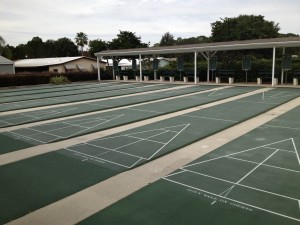 Identifying all of the reserve items in an association can be difficult. One of the most common budgeting mistakes that associations make is not getting all of the proper items on the reserve schedule.
Identifying all of the reserve items in an association can be difficult. One of the most common budgeting mistakes that associations make is not getting all of the proper items on the reserve schedule.
Condominiums
For condominiums in Florida, Florida Statutes 718.112(2)(f)2, says that reserves must be established for capital expenditures and deferred maintenance of:
- Roofing
- Painting
- Pavement Resurfacing
- Items having a deferred maintenance expense or replacement cost more than $10,000.
Co-operatives
It should be noted that co-operatives have basically the same reserve requirements in Florida Statutes 719. To determine whether other reserves should be established, it is advisable to review old budgets, board meetings and minutes, as well as year end financial reports.
By Definition
CAI (Community Associations Institute) defines a reserve component (item) as:
“The individual line items in the Reserve Study, developed or updated in the Physical Analysis. These elements form the building blocks for the Reserve Study. Components typically are: 1) Association responsibility, 2) with limited Useful Life expectancies, 3) predictable Remaining Useful Life expectancies, 4) above a minimum threshold cost, and 5) as required by local codes”.
The key phrase to note is that reserve items should have a predictable lifespan, which means things that wear out cyclically. A few examples could be resurfacing a swimming pool every 10 to 12 years, replacing pool heaters every 6 to 10 years, and replacing common area HVAC systems every 10 to 12 years.
Specific to Your Community
Some hidden or concealed items that are not often thought about are water lines, sewer lines, storm drainage, perimeter fencing, lift stations, pumps, fire systems, exercise equipment, pond bank erosion, and sea walls. It is really important to know if the association has the maintenance responsibility of any of these items.
It is also important to note that keeping a good record of capital expenses is critical for planning purposes. With a good file system, you will know the last time a reserve item was replaced and how much it cost. It also creates a baseline for how much you may expect an item to cost in the future if you add in inflation. For example, if you painted six years ago and it cost $100,000, a reasonable expectation for the current cost may be $115,000 to $120,000. The more items that you have kept a record of, the easier it will be to project future reserve costs.